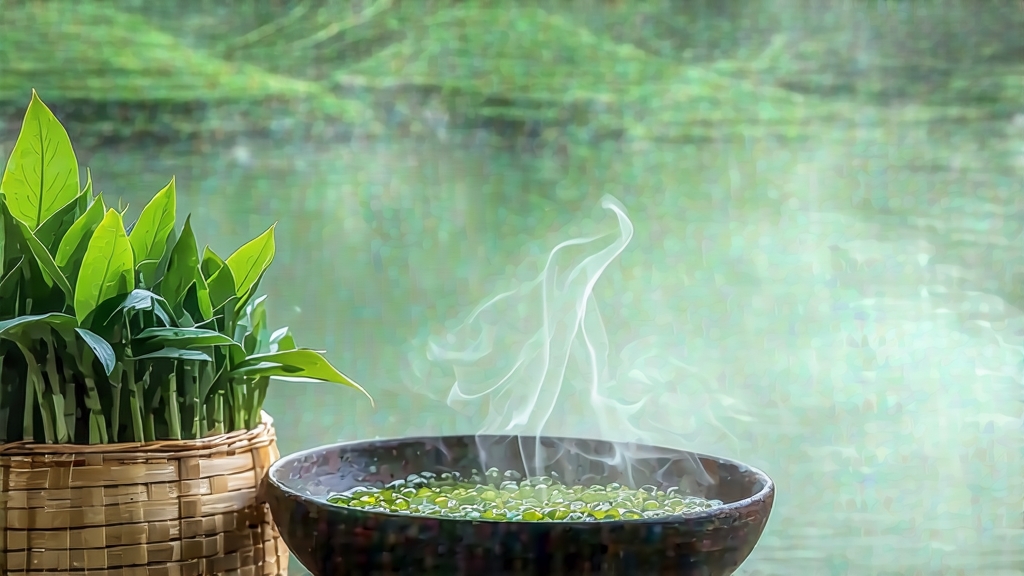
Longjing—romanized as Lung-ching and literally translated “Dragon-Well”—is the most celebrated green tea in China and, increasingly, the reference point for premium green teas worldwide. Grown on the hillsides that ring West Lake in Hangzhou, Zhejiang Province, Longjing has been imperial tribute tea since the Qing dynasty, yet its gentle, chestnut-sweet aroma and jade-green liquor feel strikingly modern. To understand Longjing is to witness how geography, history, craftsmanship, and ritual converge in a single leaf that can taste like liquid spring.
History: From Legend to Global Icon
Local lore claims that the Kangxi Emperor (r. 1661-1722) first tasted Longjing while touring the south and instantly elevated it to tribute status. His grandson Qianlong is said to have pocketed several tea shoots during a visit to the Hugong Temple at Lion Peak, so impressed was he by the clarity and fragrance of the infusion. Whether apocryphal or not, these stories cemented Longjing’s reputation among the “Ten Famous Teas of China.” By the late nineteenth century, Shanghai export houses were shipping Lion Peak Longjing to London and San Francisco, where it fetched prices higher than first-flush Darjeeling. Today, West Lake Longjing enjoys Protected Origin Status (PDO) under Chinese law, a recognition comparable to Champagne in France.
Micro-Terroirs: Four Sub-Regions, Four Personalities
Although the name Longjing is legally restricted to leaves harvested within the Xihu (West Lake) administrative district, connoisseurs subdivide the appellation into four micro-terroirs, each offering a distinct sensory signature.
- Lion Peak (Shi Feng): The highest and most sought-after zone, whose shale-rich soils and morning mists yield the smallest, most tender buds. The liquor is bright jade, almost fluorescent, with a pronounced orchid-chestnut bouquet and a cooling, mineral finish reminiscent of wet slate.
- Dragon-Well Village (Longjing Cun): The historic heartland surrounding the actual “Dragon-Well” spring. Leaves here are slightly broader, delivering a creamier body and a sweet corn note sometimes likened to Japanese genmaicha without the toasted rice.
- Five Clouds Mountain (Wu Yun Shan): Cooler air currents encourage slower growth, concentrating amino acids. The result is a velvety texture and a marine hint that educated tasters compare to nori.
- Tiger-Running Spring (Hu Pao): Named after a famous Buddhist spring, this southern flank produces the most robust Longjing, with a nuttier, almost sesame-like aftertaste that stands up to multiple infusions.
Beyond these core zones, “Zhejiang Longjing” from neighboring counties such as Xinchang and Songyang offers honest, everyday expressions of the style, but they lack the floral complexity and lingering sweetness that define authentic West Lake leaf.
Cultivar Matters: Why Seedlings Are Now Rare
Traditional Longjing came from centuries-old seed-grown trees collectively called qunti zhong (“population cultivar”). These heterogeneous bushes root deeply, resisting drought and lending layered flavor, but they sprout unevenly, complicating mechanized harvest. Since the 1980s, clonal cultivars—primarily Longjing #43 and the even earlier budding Zhongcha 108—have displaced older plantings. Both clones germinate 7-10 days sooner, allowing farmers to market “pre-Qingming” (Mingqian) tea at premium prices. Purists lament the gradual loss of qunti zhong’s depth, yet admit that #43 delivers a more consistent, luminous jade color and a brighter, almost magnolia-like top note. The conscientious consumer should therefore inquire not only about harvest date but also about cultivar when purchasing top-tier Longjing.
The Craft of Pan-Firing: Hand vs. Machine
Green tea’s defining step is kill-green (shaqing), the rapid de-enzyming that locks in verdant color and fresh aromatics. In Longjing, this is accomplished not with steam but with pan-firing in bare-metal woks, a technique recognized as part of China’s Intangible Cultural Heritage.
A master tea maker begins with a wok heated to 80-100 °C, rubbing a small mound of fresh leaves against the surface with bare fingers in a motion known as “push, press, and shake.” Ten minutes of this drives off grassy volatiles while coiling the leaf into the characteristic flat, sword-like shape. Temperature is then dropped to 60 °C for a further